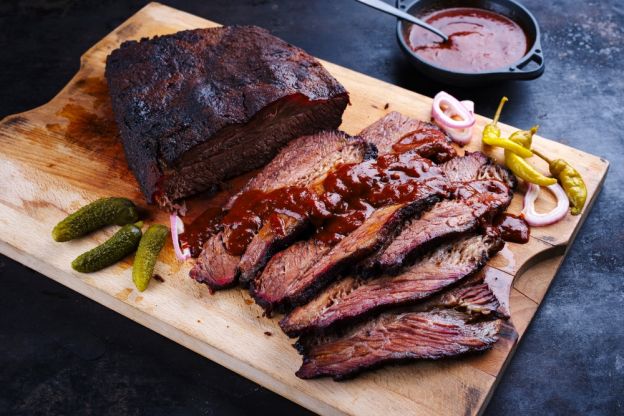A State-by-State Guide to the Most Iconic Foods in America

© hlphoto/Shutterstock
Texas: Smoked Brisket
Texas is legendary for its barbecue, and the crown jewel of Lone Star BBQ is smoked brisket. In a state where “barbecue” practically means beef, brisket – a tough cut from the cow’s breast – has been transformed by pitmasters into a melt-in-your-mouth icon through the magic of slow smoking. Back in the day, brisket was a cheap, gnarly cut that ranchers or butchers might have considered second-rate, but Texans embraced it, understanding that with patience and smoke, this cut could outshine all others. A Texas brisket is typically simple in seasoning: a rub of salt and plenty of coarse black pepper (maybe a hint of garlic or spices, depending on who you ask). It’s placed in a smoker and cooked low and slow – we’re talking anywhere from 12 to 18 hours – over oak or pecan wood until the meat is deeply browned (near black, in a good way) with a crunchy “bark” on the outside and succulent, tender meat inside. The fat renders down to baste the meat, and collagen melts into gelatin, giving brisket that juicy, pull-apart texture when done right. The resulting slices have a pink smoke ring beneath the bark and an irresistible aroma. In Texas, you line up at BBQ joints like Franklin’s or Kreuz Market early to get your paper-wrapped parcel of brisket before it sells out. It’s often served on butcher paper with just white bread, pickles, onions, and maybe some BBQ sauce on the side (though many Texans say good brisket needs no sauce). This humble cut turned delicacy represents Texas’s resourcefulness and obsession with flavor. Smoked brisket is more than food in Texas – it’s a point of pride, a subject of pilgrimage, and a taste of tradition that Texans hold sacred.
More steaming articles
 10 genius fruit hacks that will change...
10 genius fruit hacks that will change...
 Cheap & Easy Meals that Won't Break the...
Cheap & Easy Meals that Won't Break the...
 45 Quick & Easy Dinners to Make with...
45 Quick & Easy Dinners to Make with...




















































